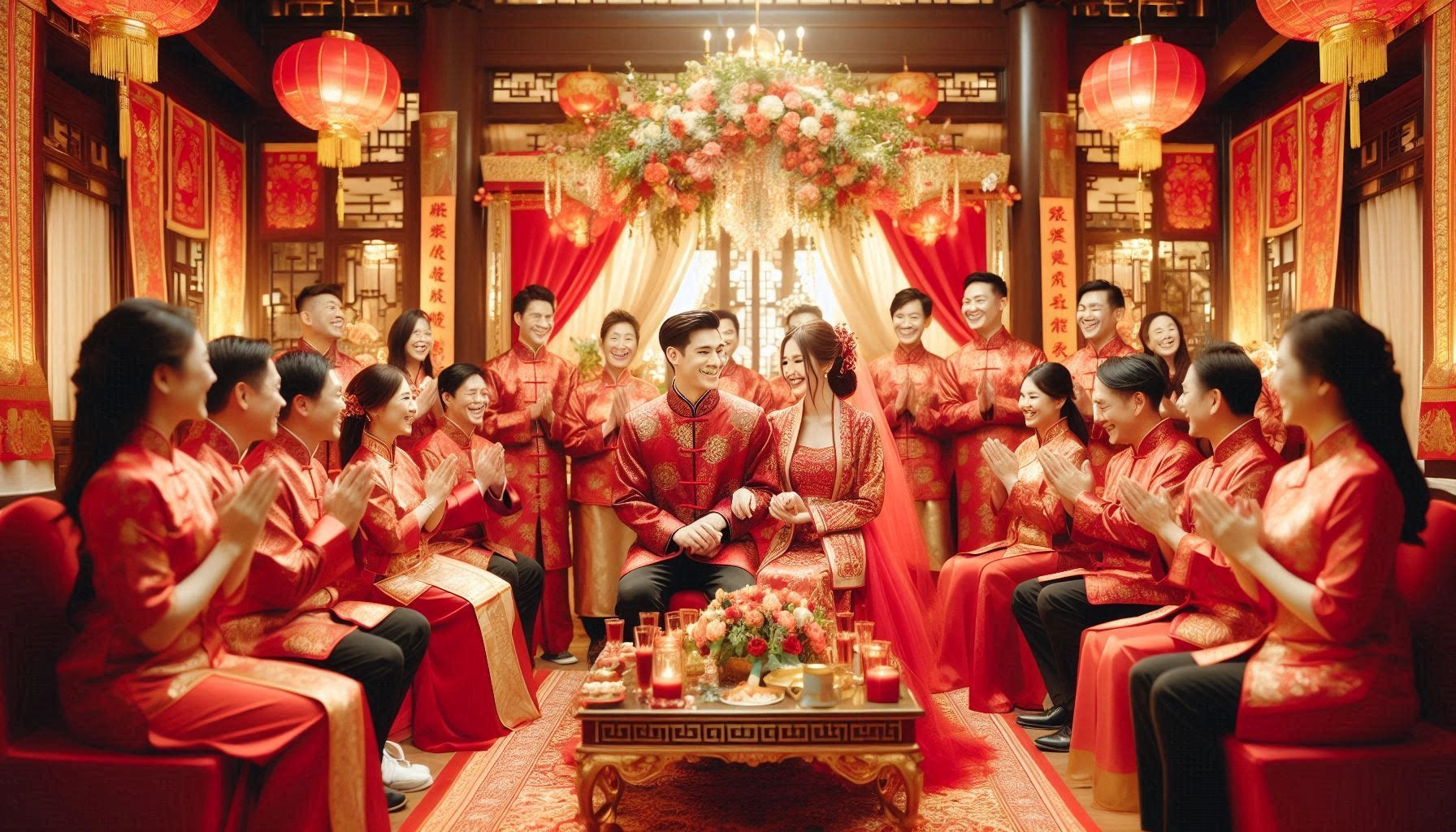Chinese weddings are rich in tradition, symbolism, and cultural significance. For HSK learners, understanding these customs not only provides a deeper cultural insight but also helps in mastering relevant vocabulary and grammar structures. Let's dive into the various aspects of a Chinese wedding and see how they can aid your HSK preparation.
Vocabulary: Essential Words for Chinese Weddings
Here are some key vocabulary words related to Chinese weddings that you might encounter in HSK exams:
- 婚礼 (hūnlǐ) - Wedding ceremony
- 新郎 (xīnláng) - Groom
- 新娘 (xīnniáng) - Bride
- 婚宴 (hūnyàn) - Wedding banquet
- 红包 (hóngbāo) - Red envelope (gift of money)
- 喜帖 (xǐtiě) - Wedding invitation
- 嫁妆 (jiàzhuāng) - Dowry
- 吉日 (jírì) - Auspicious day

Grammar: Sentences and Structures
Chinese weddings can also help you practice various grammar points required for HSK exams. Here are some example sentences:
-
新郎和新娘的婚礼在周六举行。 Xīnláng hé xīnniáng de hūnlǐ zài zhōuliù jǔxíng. The groom and bride's wedding ceremony will be held on Saturday.
-
他们在婚宴上收到了很多红包。 Tāmen zài hūnyàn shàng shōudào le hěn duō hóngbāo. They received many red envelopes at the wedding banquet.
-
这个喜帖很漂亮。 Zhège xǐtiě hěn piàoliang. This wedding invitation is very beautiful.
These sentences help you practice different grammatical structures, such as the usage of time expressions (在周六), resultative complements (收到了), and adjective predicates (很漂亮).
Listening and Reading Practice
Listening and reading materials about Chinese weddings can further enhance your HSK preparation. Here are some tips:
- Listening Practice: Listen to podcasts or watch videos about Chinese weddings. Pay attention to how the vocabulary and grammar structures are used in context.
- Reading Practice: Read articles, blogs, or short stories about Chinese weddings. Try to summarize the main points and identify new vocabulary and grammatical patterns.
Cultural Insight: The Ceremony and Traditions
Understanding the cultural context of Chinese weddings can make your HSK study more interesting and meaningful. Traditional Chinese weddings are elaborate affairs with several key elements:
- Tea Ceremony: A significant part of Chinese weddings where the bride and groom serve tea to their elders as a sign of respect.
- Banquet: A lavish feast often held in a hotel or restaurant, featuring multiple courses and various performances.
- Red Colors: Red is the predominant color in Chinese weddings, symbolizing luck and happiness.
Learning about these traditions provides a cultural backdrop that enriches your language learning experience.
Conclusion
By exploring the customs and traditions of Chinese weddings, HSK learners can expand their vocabulary, practice grammar, and gain valuable cultural insights. This holistic approach not only prepares you for the HSK exams but also enhances your appreciation of Chinese culture.